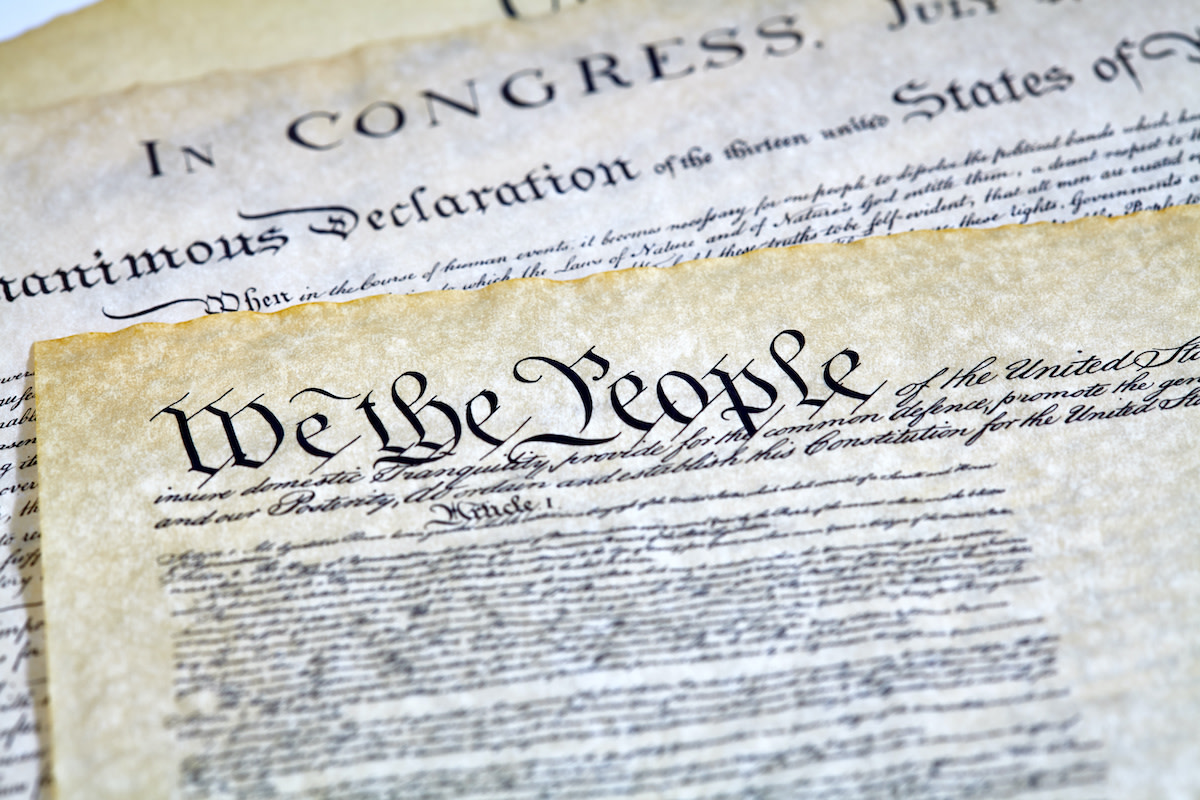Reconstruction Amendments: 13th, 14th, and 15th Amendments
Written by MasterClass
Last updated: Sep 13, 2022 • 4 min read
The Reconstruction era of United States history was a time of idealism and conflict. After Congress added the Reconstruction Amendments to the US Constitution, they laid the groundwork for greater racial justice.
Learn From the Best
What Are the Reconstruction Amendments?
The Reconstruction Amendments—also called the Civil War Amendments—are three additions to the United States Constitution that abolished slavery, granted equal rights to formerly enslaved people, and enshrined the right to vote for people of all races.
Congress ratified the Reconstruction Amendments following the US Civil War and the assassination of Abraham Lincoln. Their texts built on the president’s Emancipation Proclamation and cemented the abolitionist values of the Union in law. The House of Representatives and Senate officially adopted these amendments throughout the presidential administrations of Andrew Johnson and Ulysses S. Grant.
A Brief Overview of the Reconstruction Amendments
These three constitutional amendments remain in use and are frequent citations and references:
- 13th Amendment: While the Emancipation Proclamation ended slavery in the Confederacy, the Thirteenth Amendment abolished slavery in the entirety of the United States. It also granted Congress the right to enforce this with appropriate legislation should states defy the ordinance.
- 14th Amendment: This amendment ensured the Bill of Rights applied to all citizens of the United States of America, regardless of race. After Congress passed the Civil Rights Act of 1866, they realized they needed a firmer legal precedent to enforce the due process of law, equal protection of the laws, and so on within states. The Fourteenth Amendment allowed the federal government to challenge state governments when they abridged the immunities and rights of citizens on the basis of race. It effectively overturned the Supreme Court’s Dred Scott decision by declaring everyone born on United States soil (including Black men and former enslaved people) citizens endowed with all the entailed rights.
- 15th Amendment: Black men could not vote in all states until Congress passed and ratified the Fifteenth Amendment. The stipulation secured voting rights for Black men, making it illegal to refuse them the right to vote on account of race or previous condition of servitude. Individual states in the former Confederacy tested the limits of congressional power on this front.
4 Challenges to the Reconstruction Amendments
After the ratification of the Reconstruction Amendments, their existence led to plenty of resentment, animosity, and outright rebellion. Here are a few challenges to the amendments:
- 1. Black Codes: State legislatures in the South tried to find loopholes in the amendments to worsen conditions for Black men, women, and children throughout Reconstruction. For the creation of the Black Codes, they relied partially on the verbiage in the Thirteenth Amendment about involuntary servitude. These Codes were laws that entrapped formerly enslaved people by legally permitting their arbitrary arrest for crimes like vagrancy (at the time, a nebulously defined form of unemployment).
- 2. Intimidation campaigns: Former Confederate states saw a stream of vigilantism toward previously enslaved people. When it was time to vote, Black people who tried to exercise their rights faced harassment and harm. This didn’t just happen in the South; there were instances of intimidation in the North, too.
- 3. Jim Crow laws: Southern state legislatures created segregation or Jim Crow laws to circumvent the demands of the Fourteenth Amendment. These echoed the “separate but equal” concept of Plessy v. Ferguson, a Supreme Court case about segregation from before the Civil War. Brown v. Board of Education would later disavow this concept.
- 4. Voting restrictions: Southern legislators crafted voting laws that would allegedly apply to the entire population but targeted Black people specifically. For instance, they charged a poll tax knowing that impoverished, formerly enslaved people wouldn’t be able to pay it, or insisted on literacy tests despite the fact it was illegal for Black people to educate themselves. They then accompanied these with grandfather clauses—rules stating these conditions need not apply if your grandfather voted (which was true for nearly all white people and very few Black people in the South at the time).
Legacy of Reconstruction Amendments
Since the adoption of the Reconstruction Amendments following the Civil War, they have served more as an aspirational goal than a concrete reality. People have challenged, ignored, or exploited the rights they enshrined in the decades and centuries since then.
In the 1860s, it was the Republican Party of the 1860s who wrote and ratified the Reconstruction Amendments, with the Democrats opposing them. In the 1960s, the reverse was true—the Democrat Party spearheaded the Civil Rights Act of 1964 and the Voting Rights Acts of 1965 to embed the emphases of these amendments in the modern world—although there was still plenty of opposition on both sides as well. Around a century after the ratification of the Reconstruction Amendments, Supreme Court decisions like Brown v. Board of Education began to further enforce and implement the spirit of these important amendments.
To this day, the Reconstruction Amendments remain the subject of controversy and inspiration. While some still seek loopholes in these laws to disenfranchise people of color, others turn to them as defensive bulwarks providing the basic groundwork for racial justice and equity in the United States.
Learn More About Black History
There’s a lot of information that history textbooks don’t cover, including the ways in which systems of inequality continue to impact everyday life. With the MasterClass Annual Membership, get access to exclusive lessons from Angela Davis, Dr. Cornel West, Jelani Cobb, John McWhorter, Kimberlé Crenshaw, Nikole Hannah-Jones, and Sherrilyn Ifill to learn about the forces that have influenced race in the United States.
